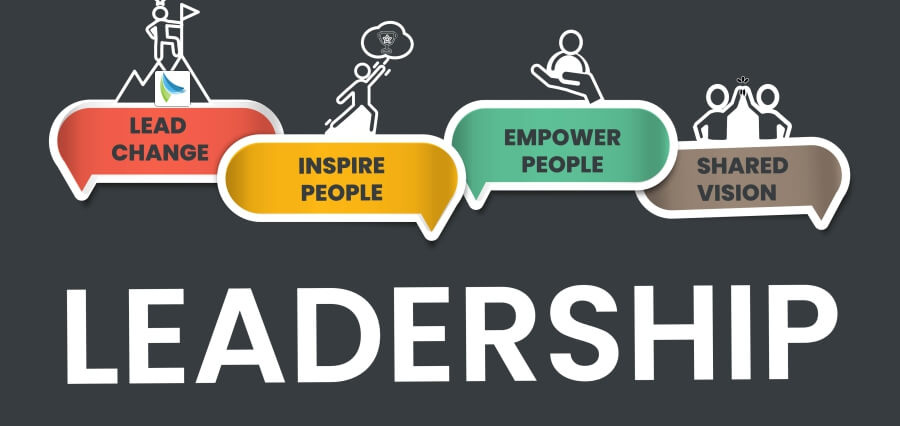Business Leadership
Modern business leadership is marked by its ability to solve several, interrelated challenges at once. Today’s business leaders are no longer measured by bottom-line performance alone; they must lead in sustainability, diversity, and digitalization. The three pillars are interlinked and overall symbolize organizational resilience, innovation, and long-term success. Organizations that integrate them in their strategy set themselves up for success in a world of increased change and high stakeholder expectations.
Leading Sustainable Practices
Sustainability is no longer a corporate responsibility but an essential strategic imperative. Firms are now being held accountable for their ecological footprint, resource utilization efficiency, and ability to add to society’s well-being. Sustainability leaders embed green behavior throughout the business, from supply chain management and product design to energy use and waste reduction.
Sustainable leadership is not compliance; it is vision and long-term thinking. By adopting the values of the circular economy, investment in renewable energy, and the construction of green products, organizations reduce risk, improve reputation, and achieve operating efficiencies. Sustainable conduct also gains access to an increasingly broad universe of environmentally conscious consumers and investors demanding responsible corporate behavior, creating greater brand loyalty and competitive differentiation.
Embracing Diversity and Inclusion
Inclusion and diversity aren’t nice-to-haves for today’s vision-led organisations—they are drivers of innovation and delivery of performance needed. Inclusive leaders understand that having diversity of thinking, experience, and ability on a team equals more innovative solutions and are even more likely to compete in fast-changing global economies.
Diversity programs are not just hiring, but building the organization’s culture where everyone is given voice, empowered, and valued. Inclusive leadership encourages equal career opportunity, mentoring, and exposure to decision-making. Not only does it enhance employee engagement, but organizational reputation and talent attraction as well from diversified talent pool.
Inclusion-driven leaders understand that inclusion is not an event, but a process. They monitor progress routinely, eliminate barriers, and integrate inclusion into policy, communication, and performance measurement, and build a culture for innovation, resilience, and growth.
Navigating Digital Transformation
Digitalization is another characteristic business leadership trend. The executives will be compelled to utilize technology in an effort to create more rational operations, enhance customer experiences, and produce new revenues. Digitalization includes cloud computing, artificial intelligence, analytics, automation, and advanced digital platforms that transform the way businesses operate and compete.
Successful digital leaders drive change from a strategic agenda. They bring technology and business strategy together in a way where investment is driving long-term goals. Digital adoption isn’t just the adoption of software but reengineering of organisational processes, gaining agility, and organisational culture development for innovation. Employees are enabled to embrace digital solutions, and the processes are transformed to deliver efficiency and value creation.
Also, digitalization enables better-informed decision-making. Real-time analytics-enabled managers can anticipate market changes, automate supply chains, and build tailored customer experiences, gaining competitive advantage in fast-changing markets.
The Convergence of Sustainability, Diversity, and Digital Leadership
All these three pillars of sustainability, digitalisation, and diversity are connected. Digital solutions rely on technology out of necessity to make the most out of available resources and monitor their impact on the environment. Diversity fuels innovation, which is the engine of the development of solutions for global issues and ensuring digital strategy is a success. Digital technologies ensure transparency and accountability in reporting on sustainability and diversity policy.
The leaders who realize these connections can formulate synoptic, long-term, and visionary plans. For example, digital platforms can make supply chains more transparent and facilitate sustainable sourcing and easier engagement of inclusive suppliers. Similarly, data insights can facilitate inclusive policy making and monitoring progress and the facilitation of a culture of accountability and continuous improvement.
Conclusion
Sustainability, diversity, and digital transformation are no longer stand-alone initiatives, but the DNA of how business now competes and operates. Leaders who integrate them into their own strategic narrative have firms that are responsive, innovative, and socially responsible.
By leading for sustainability, living diversity, and driving digital transformation on purpose, leaders can position their organizations for sustainable performance as well as respond to evolving employee, customer, and society expectations. It is this dual play that is the new business model of the future—model that integrates performance with purpose, innovation with inclusion, and ambition with responsibility.











